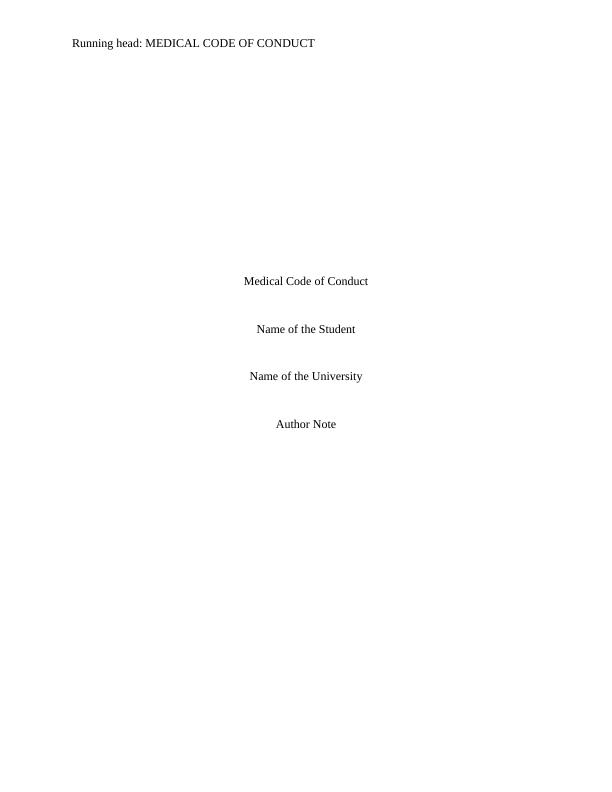Medical Code of Conduct
Respond to a video discussion assignment regarding patient autonomy and surrogate decision making, discussing legal and ethical issues, determining competency, and the role of healthcare administrators in ensuring compliance with state laws.
4 Pages627 Words475 Views
Added on 2023-04-20
About This Document
This article discusses the medical code of conduct and the ethical issues surrounding a case where a patient's daughter made decisions about his amputation without proper consent. It also provides recommendations for healthcare surrogates.
Medical Code of Conduct
Respond to a video discussion assignment regarding patient autonomy and surrogate decision making, discussing legal and ethical issues, determining competency, and the role of healthcare administrators in ensuring compliance with state laws.
Added on 2023-04-20
ShareRelated Documents
End of preview
Want to access all the pages? Upload your documents or become a member.
Ethical Dilemma in Healthcare: Case Scenario of ER Scene 1
|15
|1394
|53
Partnering with Patients: Importance of Effective Collaboration in Healthcare
|9
|2479
|355
The postoperative education prior of after the rehabilitation
|11
|2836
|27
Importance of Partnering with Patients in Healthcare: Mr. Taylor Case Study
|10
|2690
|184
Nursing Care Plan 3 Clinical Placement Case Study 2022
|11
|1740
|24
Organizational Systems Nursing Quality Outcome Indicators Report 2022
|5
|1100
|16


